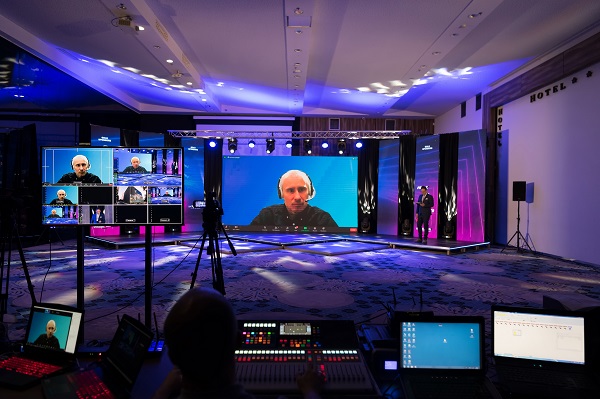The Dante of video
With supply chains still in turmoil, open source system for AVoIP are gaining ground. John O’Brien looks at NDI and how it might solve a very contemporary problem.
Once seemingly impossible, video-over-IP is now in widespread use. At a professional level, it is stock in trade. There are many extensively deployed proprietary approaches in the market. But there are also several open systems broadly realised. Each brings strengths and weaknesses.
In 2016, we saw the introduction of NDI, a royalty free software spec developed by the company NewTek. Within two years, vendors as large as Microsoft had added NDI support for Skype (now mostly moved to Teams). Since then, it has made significant inroads.
ADVERTISEMENT
In 2022, NDI is now native on numerous streaming devices and looking well set for a rosy future.
What is NDI?
NDI (Network Digital Interface) was formulated to transfer high-definition video over standard GigE networks. It also carries up to 16 channels of uncompressed audio and bi-directional metadata. All with good latency.
Although privately developed, NDI has been widely accepted by gear manufacturers, particularly input devices like cameras. So widespread is the uptake, several wags have recently compared its market penetration as “like what Dante did to audio” and there is an element of truth in that.
NDI vs SDI vs HDMI
There are several solid hardware options for IP based video distribution.
For decades, SDI (Serial Digital Interface) has been the industry standard for digital broadcast. It’s had great video, good audio and been a reliable option for broadcast vision. Developed and regularly updated by SMPTE, this is still essential technology for professional level broadcast.
HDMI’s distance limitation, lack of lockable connectors and problematic HDCP keep it more for domestic or proprietary distribution systems (that have overcome some of these limits).
NDI has entered the fray to offer high quality network video at relatively low cost. It has the visual quality of SDI and HDMI, superior audio quality to SDI and easier bi-directional control than HDMI. It also runs on a single cable, including power with PoE.
Why look at NDI?
At the moment, lead times for proprietary AV-over-IP systems are blowing out from 3-6 months to over a year. Some manufacturers and distributors can’t even offer a fixed time for delivery. Worldwide supply chain issues in many sectors are compounded in electronics circles with concurrent chip shortages, particularly critical AV ones such as DAC and FPGA.
NDI enabled devices are readily available. This has led to integrators seriously considering this option, if not already deploying it. And it doesn’t negate investment in legacy systems. It’s easy enough to deploy alongside SDI, in particular. Single cable PoE adds another attractive option for integrators.
Teams-NDI interface is available and ready to go. This is great for getting smaller UC jobs going with ease and at low cost. A system with 16 channels of uncompressed audio is nothing to sneeze at either.
Downsides
The big limit on NDI is not just network bandwidth but the high switching speed required. Most proprietary AV over IP systems are fast and stable on correctly implemented GigE networks. But they are costly – both upfront for gear and it keeps integrators and their clients stuck in a branded eco-verse.
Many large end users are already heavily invested in a proprietary platform for AV delivery. Although some component lead times are long, retooling to another platform is quite cost prohibitive. As is re-training. Further, there is considerable risk to the integrator changing platforms or vendors, with most major suppliers experiencing some level of delay in delivery.
Part of NDI’s design sees it limited to being inside a LAN (although v5.0 updates this). There is a low bandwidth alternative, NDI/HX, which can transmit over WAN, but with reduced quality.
Where to for NDI?
NDI will fill some niche holes for now. It adds a simple integration solution for small scale installations. It may even expand capabilities in other areas as it evolves. Being software based, it is not as reliant on specific hardware chips, more leaning on manufacturers to incorporate the feature.
But totally re-engineering larger, more complex systems will be unlikely.
First, technical limitations (particularly switching speeds) of the NDI platform make it unsuitable in many contexts. More importantly, there would be no return on all the sunk cost of the previous installation.
While supply chains stay disrupted and delivery times remain fluid at best, it will be up to integrators to manage customer expectations on what solutions can be reliably supplied and when. It will also be up to integrators to find workarounds or to Frankenstein their system configurations until critical components are shipping again.
Maybe, as NDI expands its roles and capabilities, it will become more ubiquitous. Also, its contemporary supply advantage may well increase its pervasion.
-
ADVERTISEMENT
-
ADVERTISEMENT
-
ADVERTISEMENT
-
ADVERTISEMENT

